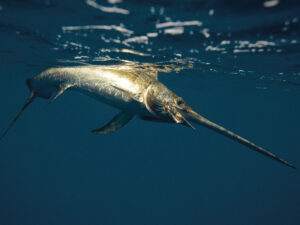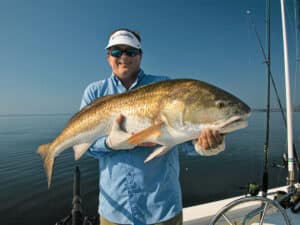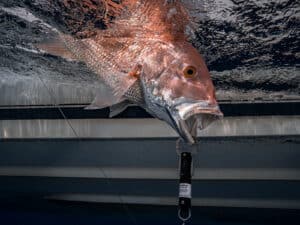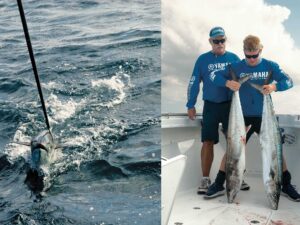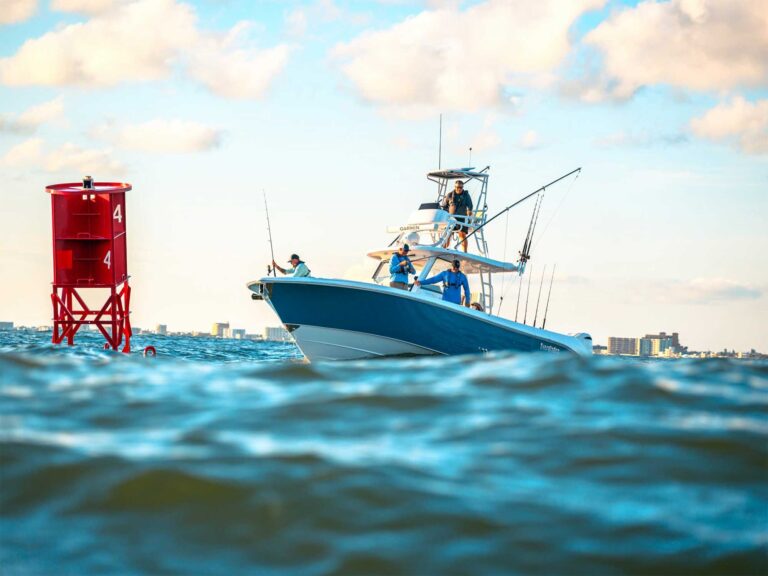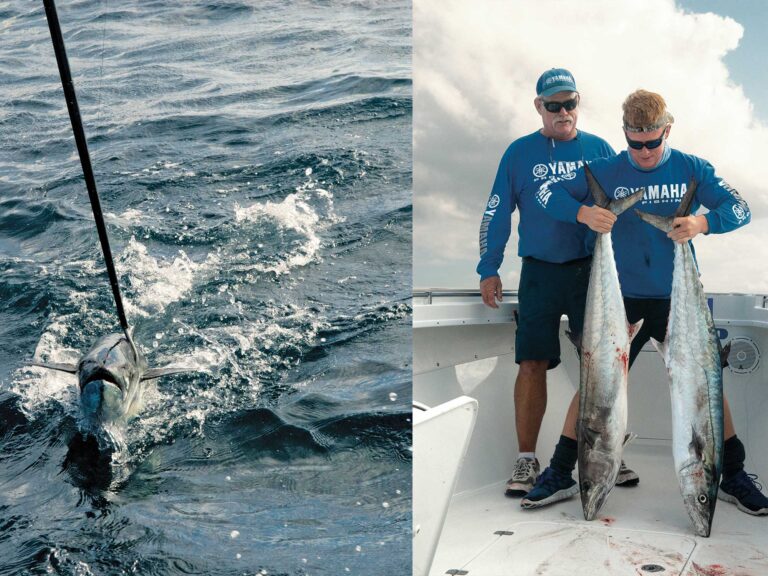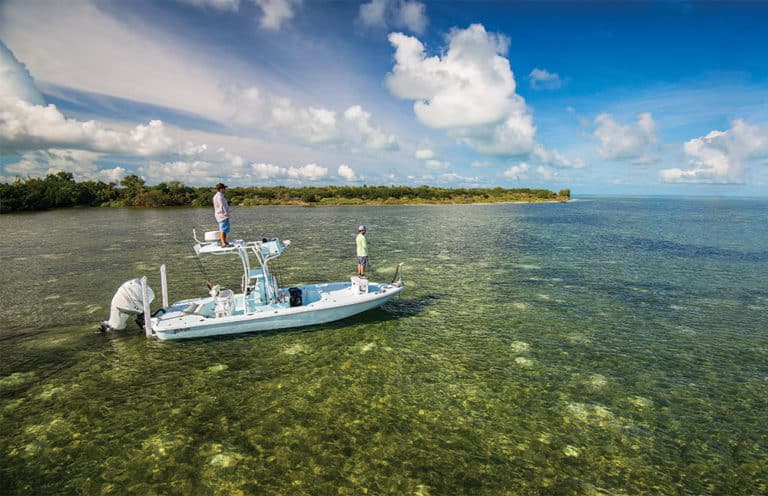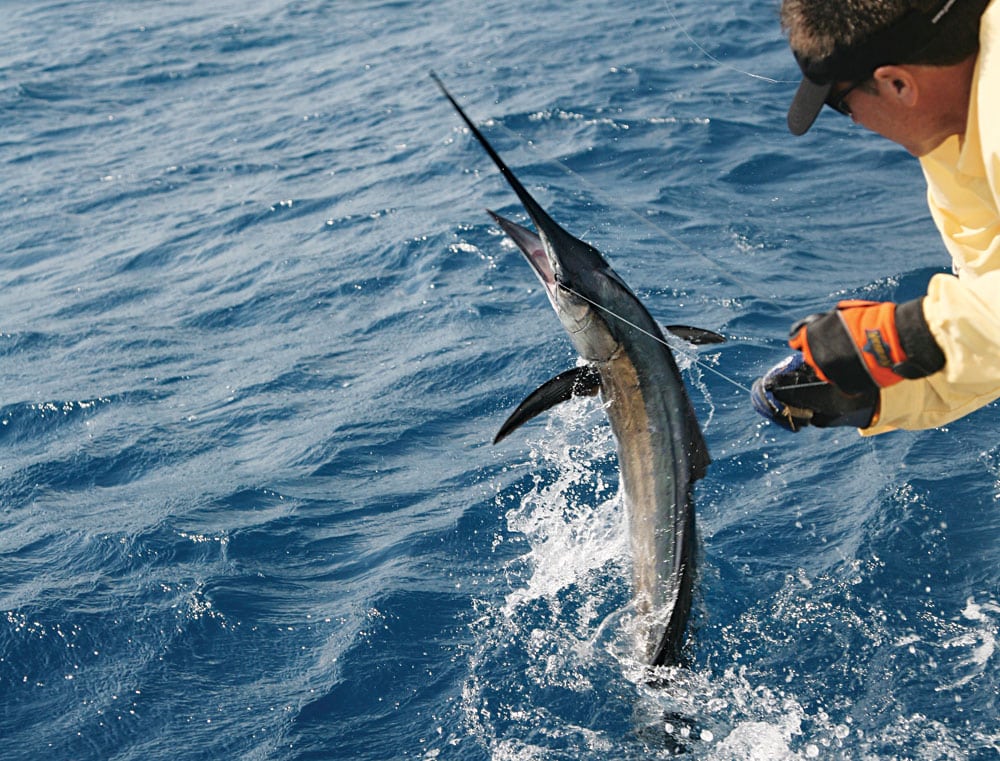
It was a beautiful winter day with barely a breeze. Had we been headed to Bimini, it would have been custom-ordered weather. However, we were looking for sailfish — and a 15-knot northeast wind that never materialized. Nonetheless, we put out an attractive spread of live baits, with a pair of large threadfin herring dangling from a helium-balloon-assisted kite. When the day drew to a close, we’d logged three sailfish releases off Miami. But the kicker was that the surface and near-surface baits went unnoticed. It was the single deep bait set about 50 feet down that scored all three touchdowns for us. This served as just one more vivid example of the importance of covering both water area and depth to catch sailfish.
Live-baiting sailfish, something I’ve been doing a long time, is one of my favorite ways to fish. Over the years I’ve discovered six essential elements of consistently catching sailfish when they’re hard to come by, and for catching more of them when they’re pushing through. Stick to these guidelines and you will catch more sailfish.
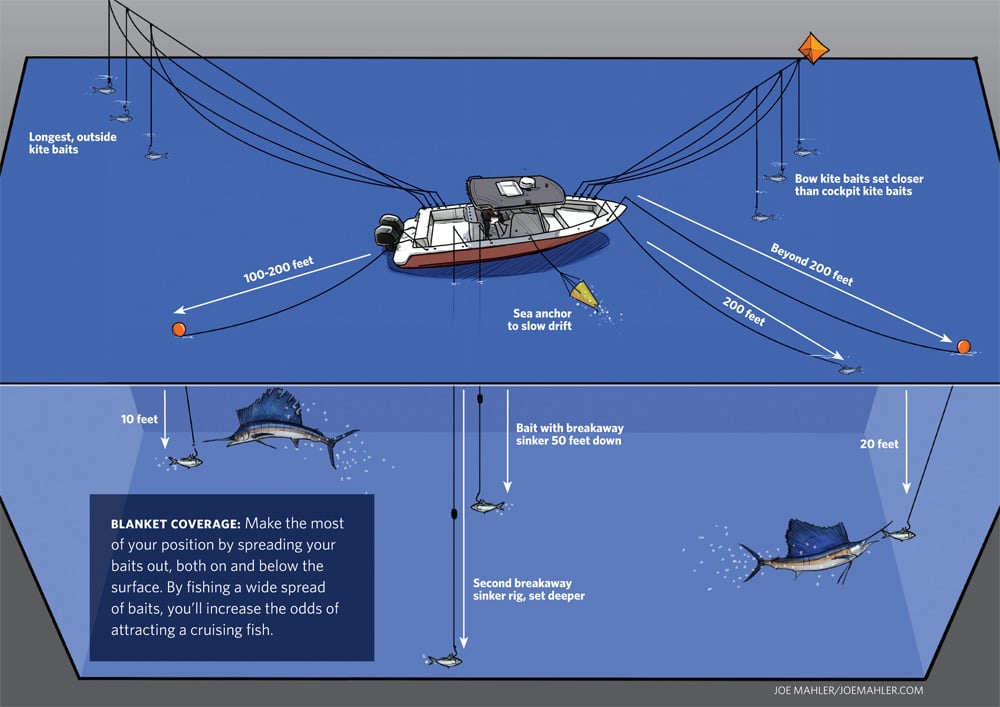
Determine Depth Highways
When sailfish are on the move, they show preferences for specific depth highways because of a thermal edge, current flow, bait concentrations or a combination of the three. If you hear of fish taken at a specific depth, say 120 feet, it stands to reason that more fish will be near that depth.
After determining where the current comes closest to the reef, we’ll drift over an 80- to 250-foot window, monitoring our bait spread as well as the fish finder for bait concentrations. When we raise a sailfish, we note the depth: If it was in 120 feet (to use that depth example again), we’ll narrow our focus to that 110- to 130-foot highway.
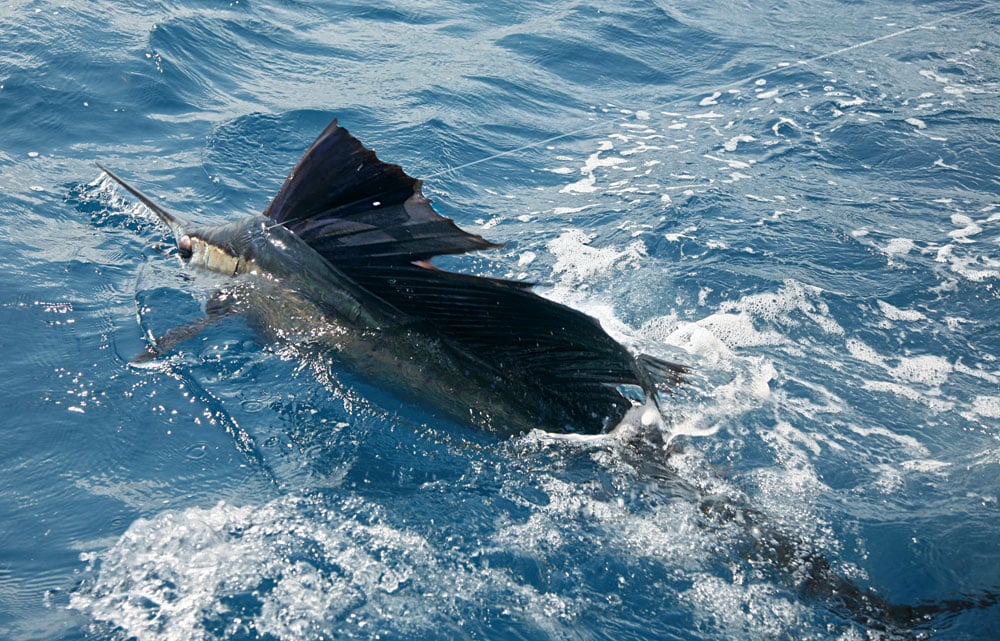
Opt for Blanket Coverage
Covering a large area of surface and the water column is another critical tactic. I often deploy a sea anchor and drift rather than power troll. When I have the angler power aboard, I’ll deploy a fishing kite from the bow and another from the cockpit. Each kite will have three baits assigned to it. I’ll let the cockpit kite baits out farther than the bow kite. Those long baits serve as the “outside” baits on the downwind side of the boat versus the three “inside” baits off the bow kite. That string of six baits covers a large area. Should a sailfish pass downwind of the boat, I have baits in place to intercept them.
On the upwind side of the boat, the coverage continues. We’ll put out two baits under balloons, one well beyond the rest of the spread, with its bait some 20 feet down. The other balloon is set between 100 and 200 feet away, with its bait 10 feet deep. We’ll free-line another bait a couple of hundred feet out, and fish at least one bait on a breakaway sinker about 50 feet down, and sometimes a second one deeper than that.
With that spread in play, the surface area and depth we’re covering increases our odds of catching sailfish. The same spread can be deployed when slow-trolling, which often makes it easier to stay within a specific zone once fish are located.
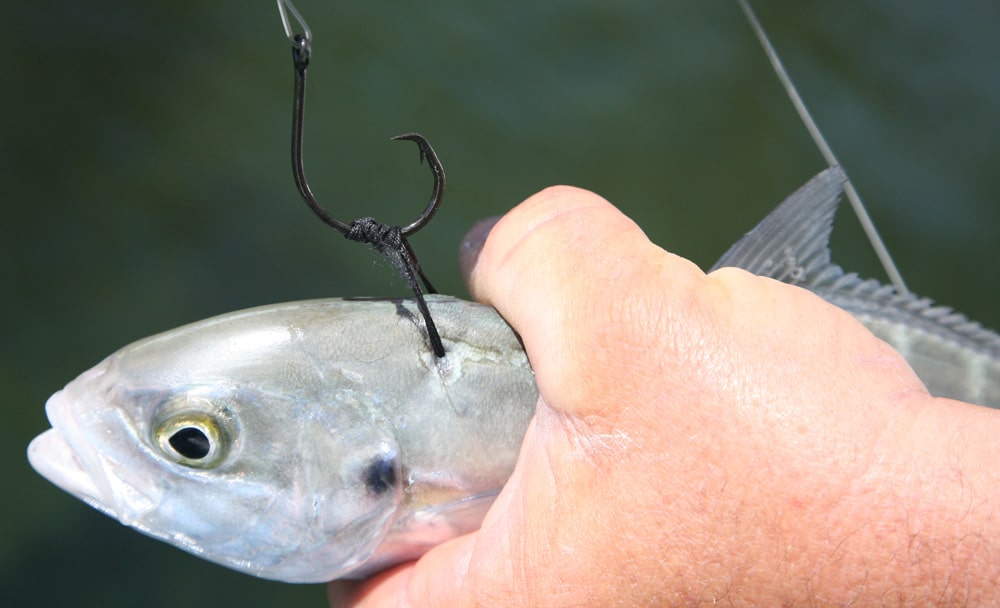
Vary the Baits
A variety of live baits work on sailfish, including goggle-eyes, blue runners, threadfin herring, cigar minnows, large pilchards and speedos. If you can obtain more than one type of live bait, do so. The small- to medium-size goggle-eyes, runners and speedos are best for sailfish.
When we have more than one kind of bait, we’ll dispatch them in the spread. The hardier baits — goggle-eyes, runners and speedos — are excellent kite baits, as are large threadfins. Sometimes sailfish prefer smaller baits, such as threadfins, cigar minnows and pilchards, and these do very well on the flat and deep lines. If a pattern develops where a specific bait is getting the bites, we’ll switch to more of those.
Lively baits are key. Change them out when they slow down. Even though they appear fine, it’s often the fresh, energetic, panic vibrations emitted by fresh bait that gets the bites. Keep a pitch bait ready on a spinning rod. Should you spot a sailfish tailing or cruising within casting range, or if one follows a hooked fish to the boat, you’ll be set to capitalize on the opportunity.
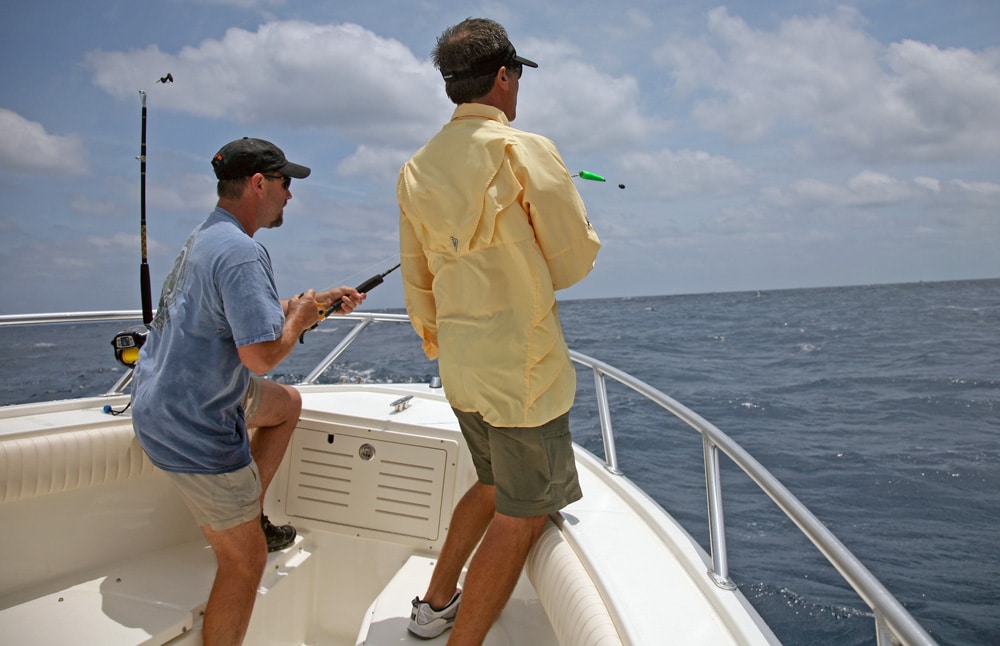
Bridle a Must
Bridling even the smallest live bait makes good sense. I was hardheaded in this area early on, opting to simply run a hook in front of a bait’s dorsal fin, through its nostrils, or in front of its anal fin. After having hooks turn back into baits and dropping too many fish for my satisfaction, I converted to bridling.
Bridling serves two purposes: It creates a gap between the circle hook and bait so nothing interferes with it turning, catching and setting in a fish’s jaw. Second, the bridle prevents the hook point from turning back into bait.
With large kite baits, bridle in front of the dorsal fin, which lets them “dig” down. Ditto with slow-trolling them. With smaller baits for drifting and slow-trolling, like pilchards and herring, opt for a nostril bridle.
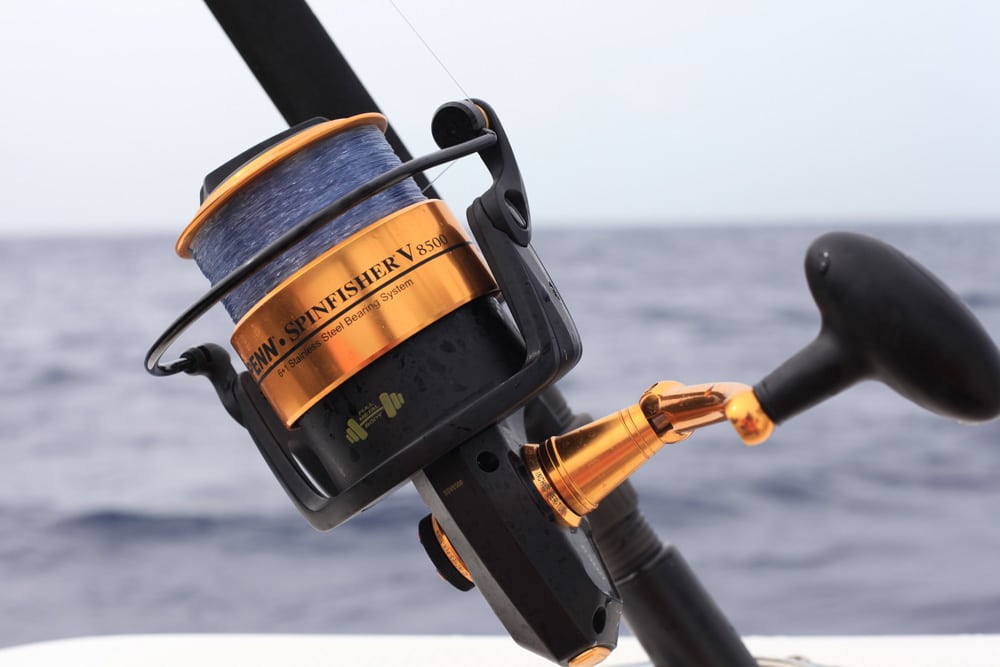
Fine-Tune Terminal Tackle
Sailfish are an ideal light-tackle fish, with 20-pound-class tackle a sporty choice, and 30-pound the norm. It’s great for the angler because they’ll enjoy a spirited fight. It’s good for the fish because 30-pound is heavy enough to bring the fish in quickly.
The key to baiting sailfish is to employ as small a hook and as light a fluorocarbon leader as you can get by with and still catch them. We use 7/0 and 6/0 in-line circle hooks on larger baits, and 4/0 and 5/0 circles on smaller baits. I don’t go heavier than a 50-pound leader, and when a bite is hard to come by, I’ll drop to 30-pound-test on the larger baits and 20-pound on the smaller baits. Before deploying a rig, I’ll first attach the hook to a camel-back strap on the boat, and pull to straighten the leader. This allows for a better presentation. I’ll then bridle the bait and send it into position.
With lighter leaders, loosen the drag a bit and try to get to the fish as soon as you can. Loosening the drag alleviates some tension and leader chafing should it rub against the fish’s bill. Getting to that leader fast ensures you’ll have a legal release and not a lost fish.
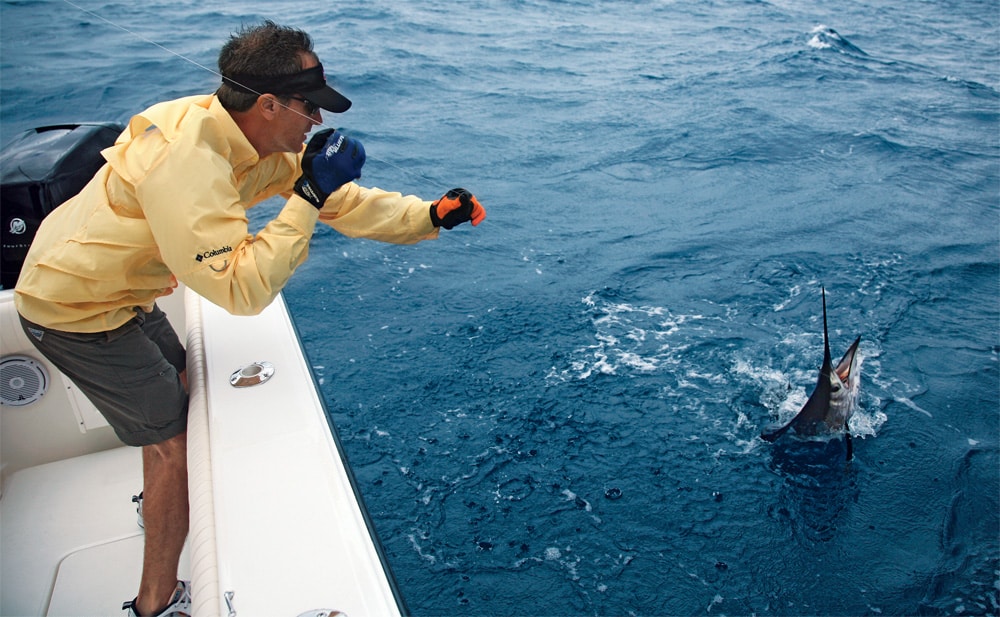
Keep the Baits in Play
It’s easy to get excited when a sailfish is hooked and the aerial display begins. That’s fine, as long as everyone’s other eye is glued to the remaining baits, anticipating a double- or triple-header. Remove all the rods, and you might get that one fish. Keep most of the baits in play, and you could be in for a big rally.
When we hook up, we’ll clear only the lines that might interfere with the fish, and keep the others in play. The kite baits stay put, splashing at the surface, and all will keep a vigilant watch on the upwind floats and deep rod. We’ll maintain the watch right through the release of the sailfish. Then, we’ll strip back and cut the damaged leader, retie the hook and rebait, and get that outfit right back into the spread. After all, there are fish to catch!
Tackle Up With Different Rigs
Kite Setups
Rods
Conventional: 6-foot new-generation composite stand-up-style rods rated for 30- to 60-pound or 50- to 80-pound line.
Reels: Conventional: Penn 16 Internationals, 30 and 40 class lever drag reels; 9500-class spinning reels.
Line: 30-pound nylon mono on Internationals. On smaller-capacity reels, 50-pound braid, with a 100- to 200-yard topshot of 30-pound nylon monofilament. High-viz yellow makes it easy to monitor kite lines.
Leader: 10-foot, 50-pound-test fluorocarbon leader attached to main line with barrel swivel.
Hooks: VMC Tournament in-line circle or equivalent, size 4/0 to 7/0, to match the bait.
Rig: Double the main line with a Bimini Twist and run it through the ceramic ring that will connect to the release clip, then through a brightly colored float to help monitor the line. Then tie the double line to a barrel swivel, and add a 10-foot, 50-pound-test fluorocarbon leader.
Flat Lines
Rods: Combination of small conventionals, same as kite rods, and 7-foot spinning rods rated for 20- to 40-pound-test line.
Reels
Conventional: 30-class lever drag reels; spinning, 7000-, 8000- and 9500-class reels.
Line
Conventional: same setup as kite rods, above; spinners, 20-pound-test nylon monofilament, in clear or smoke blue.
Leader: Double the main line with a Bimini twist and tie it to a small barrel swivel, followed by 10 feet of 30- to 50-pound fluoro leader. When drifting or slow-trolling with spin tackle, the swivel alleviates line twist.
Hooks: In-line circle hook, size 4/0 to 7/0, to match bait.
Rig: To position deep baits, double a few inches of line about 30 to 40 feet up the fishing line and slide it through an egg sinker. Break a No. 64 rubber band and slip it through the loop of doubled line, and pull the line and rubber band halfway back into the sinker. The rubber band holds the sinker in place; under the pressure of a fish, the line pulls free and the weight drops off.
Pitch Baits
Rods
Conventional: composite stand-up, same as kite rods; spinning, 7-foot, same rods as flat-line rods.
Reels: 7500- and 7000-class spinners
Line: 20-pound-test nylon monofilament
Leader: Double the fishing line, then Bristol-knot it to a 12- to 15-foot, 50-pound fluoro leader. Add hook with an Overhand Loop Knot.
Hooks: In-line circle hook, size 4/0 to 7/0, to match bait.
Rig: While a livey is the standard pitch bait, a small, fresh ballyhoo allowed to sink slowly in free-spool works too. Add a strand of soft copper wire to the hook eye. Run the hook, point first, through the middle of the lower jaw, then wrap the hook shank and lower jaw with the wire. Drop down to 30-pound fluoro leader with small, fresh ballyhoo.

